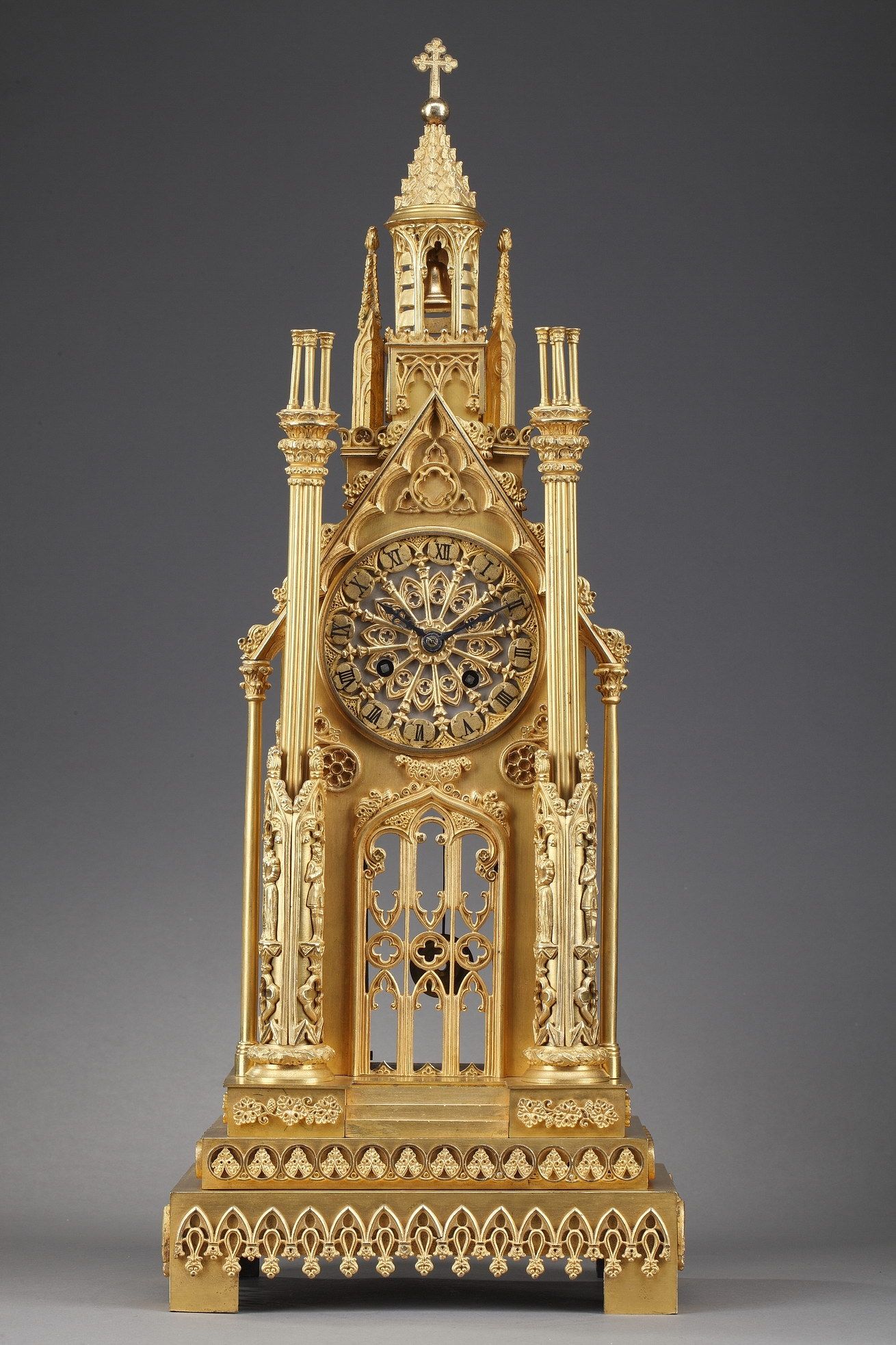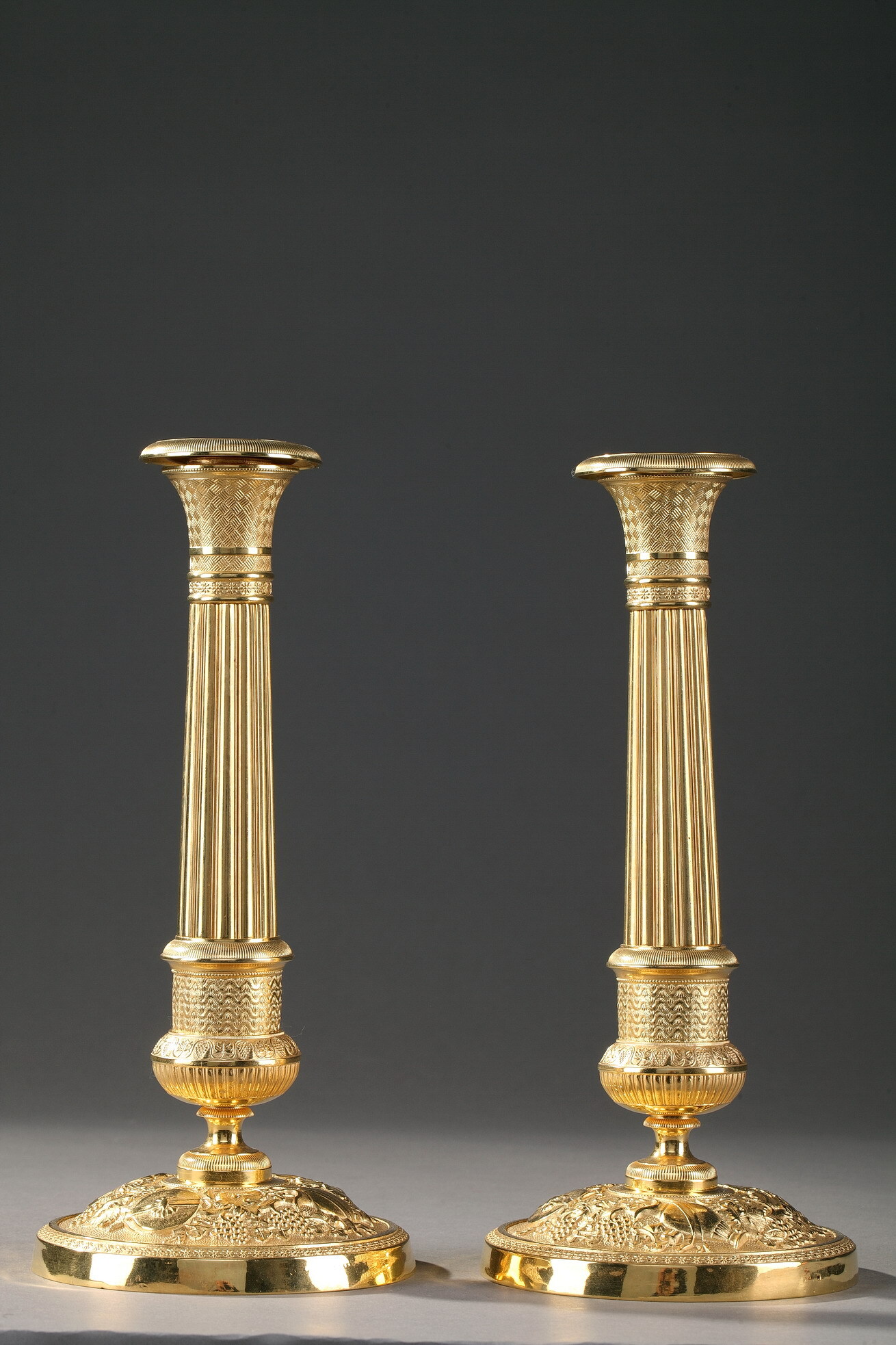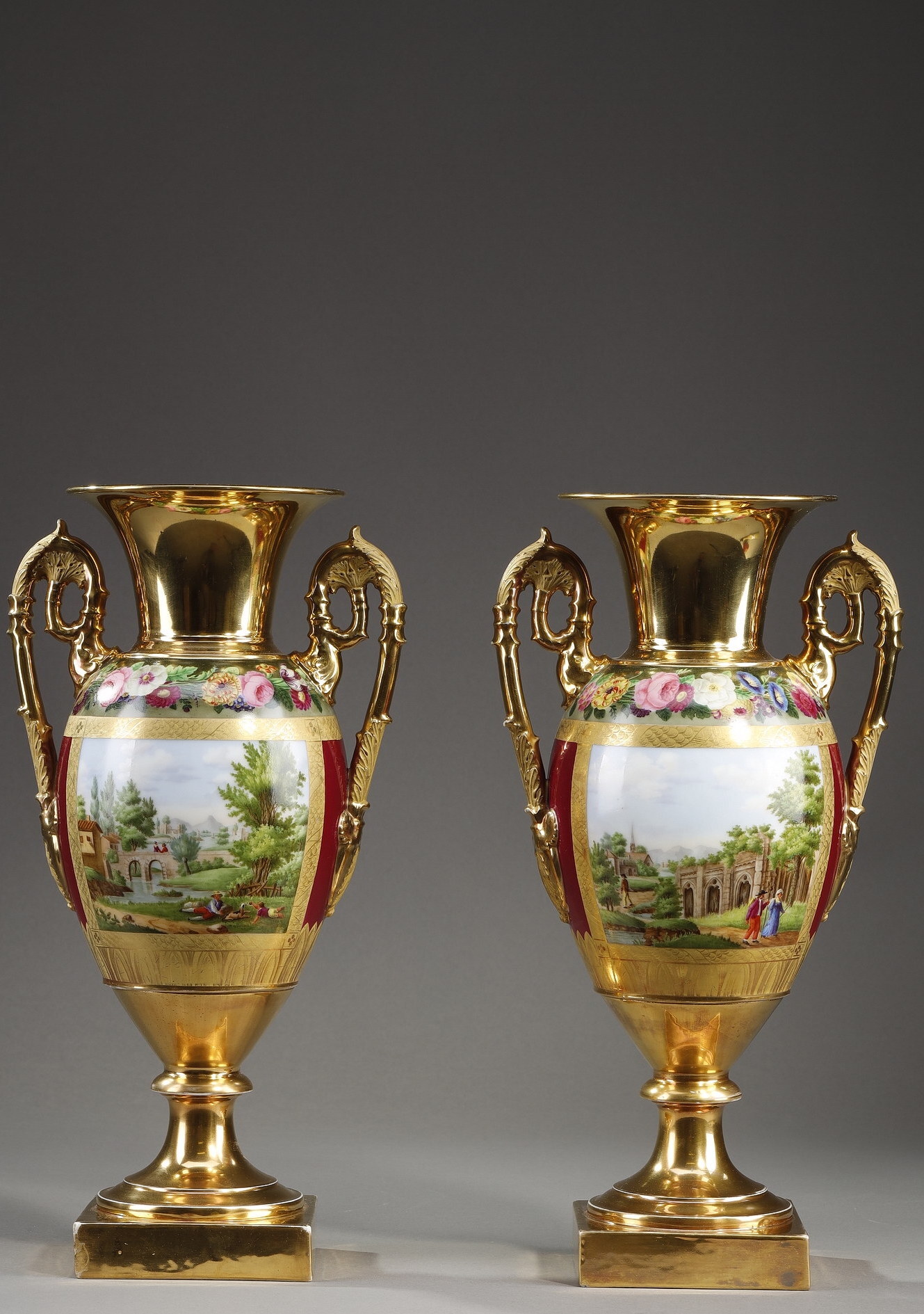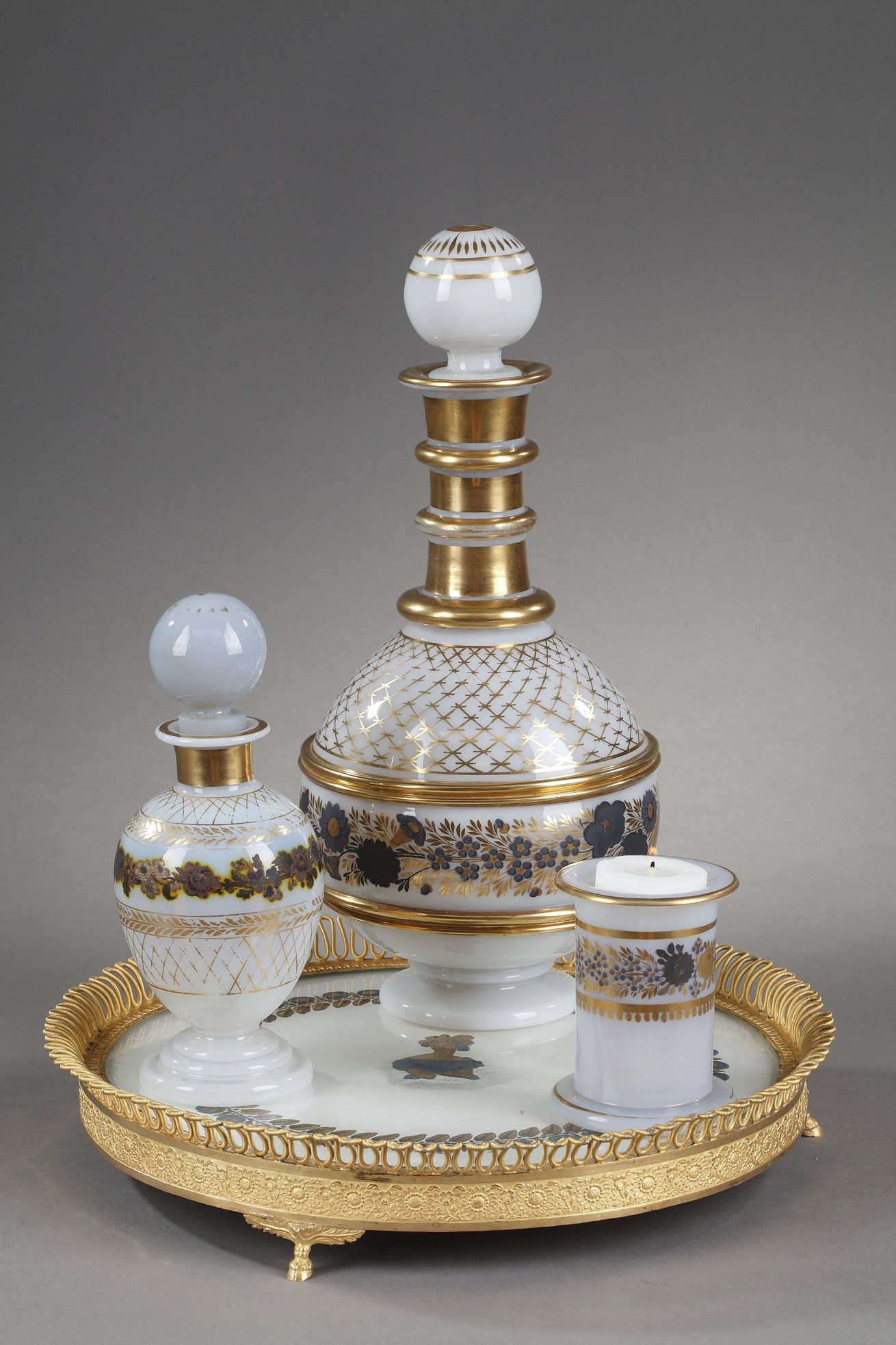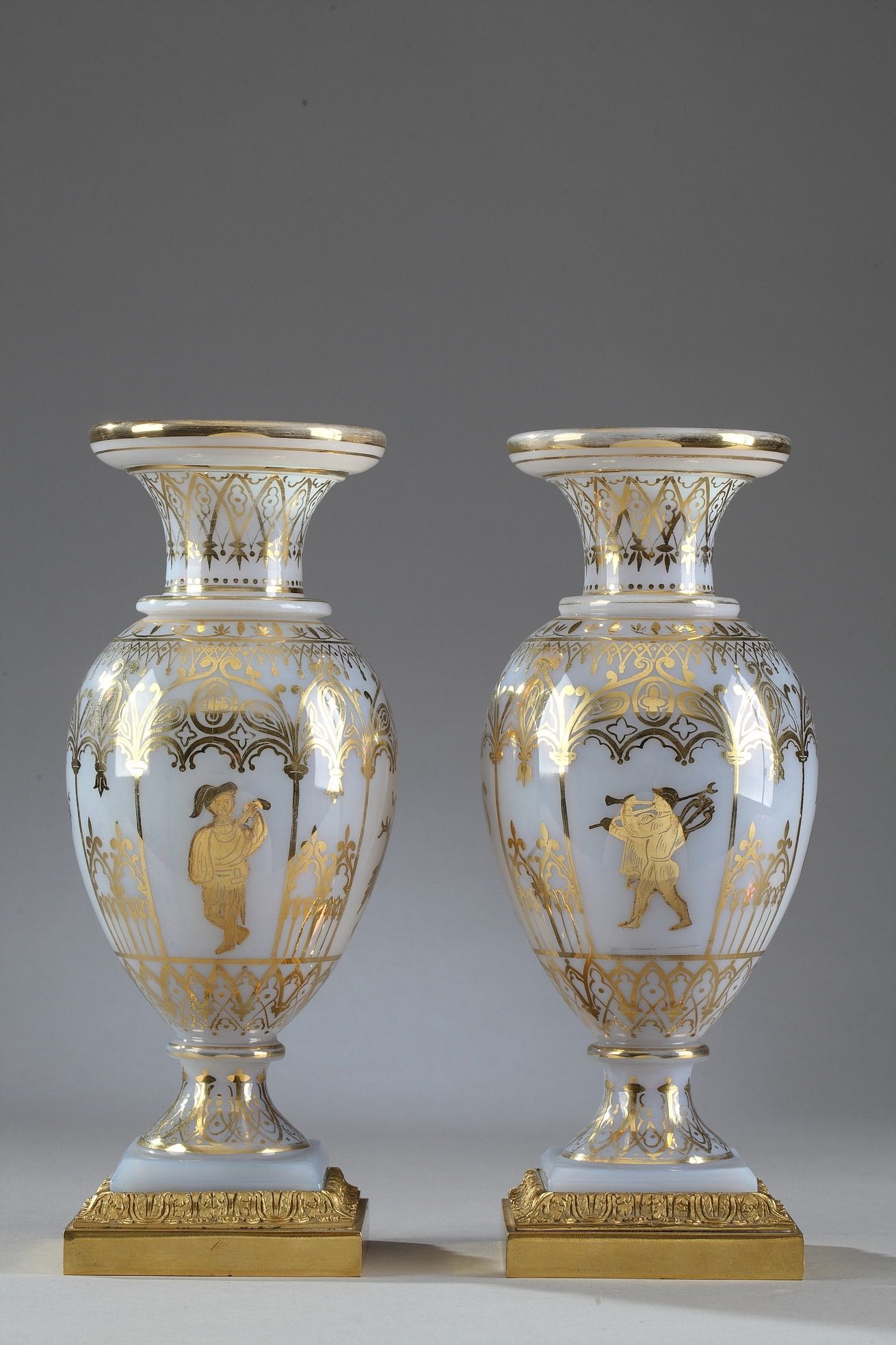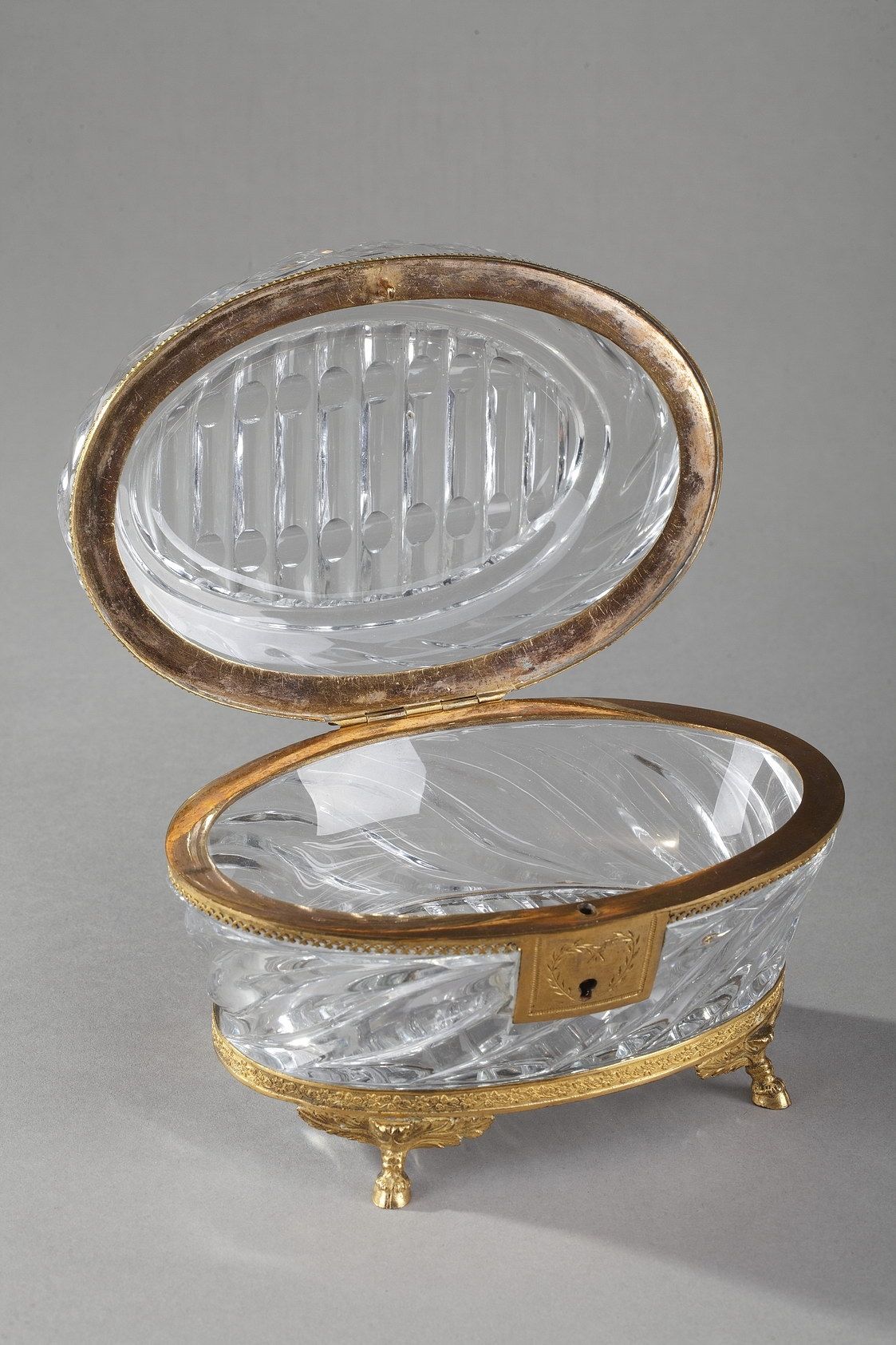Atena and its collection of Romantic art
10.09.19
"Romantic Paris, 1815-1848": the exhibition at the Petit Palais
From May 22 to September 15, 2019 the Petit Palais presents "Romantic Paris", an immersive exhibition that plunges us into the cultural and artistic ambience of the Romantic era. We discover the interiors of the Tuileries Palace adorned with blond wood furniture, the galleries of the Palais-Royal with its luxury objects, clocks, opal and small bronzes, the walls of the Salon with its "troubadour" canvases and genre scenes, and marvel at a whole generation's infatuation with the Middle Ages and the Gothic style.
Galerie Atena and its collection of Romantic art
In the wake of the Petit Palais exhibition, Galerie Atena is highlighting its own Romantic period pieces, a rich collection of bronzes, clocks, chests, lighting,collectibles andglassware that testify to the artistic effervescence and fine craftsmanship of the Romantic years.
The clocks
Clocks were a real fashion phenomenon, which began to develop at the end of the 18th century. Every important person in society had to have a clock on their mantelpiece. Moreover, "elegance and fashion demanded that the clock in the living room should not be the same as the one in the boudoir, and that the one in the dining room should be completely different from the one in the bedroom. Not only that, but the clocks in a prelate's house must not be similar to those in a general's house; for each state, the clocks must have characteristic ornaments. A little mistress will not have on her mantelpiece a clock decorated with sabres and cannons. A serious magistrate will not want either Venus or Love on his"(Journal de Paris, 4 May 1810).
Orders were numerous and styles varied, from Gothic to Renaissance and Rocaille. Clockmakers sought to appeal to their clientele by using the subjects of paintings popular at the Salons, or popular characters from novels such as Esmeralda from Victor Hugo's Notre-Dame de Paris, published in 1831.
Esmeralda "Clock " The Dancer with Tambourine
At the last exhibition of Restoration industry products, in 1827, the neo-Gothic style dominated. Clocks and mantelpiece clocks were favored objects of this style. They were transformed into small Gothic cathedrals, adorned with arcading, ogives, pinnacles, and flying buttresses. The dial, meanwhile, took the form of a rose window. This model, known as the "cathedral" clock, is very representative of the historicism that dominated the 1820s and 1830s. But the Gothic style affected a wide variety of everyday objects in patinated and gilded bronze.
The materials used for clock cases vary greatly. Many are made of patinated, gilded, or silvered bronze, but crystal, porcelain, and Boule marquetry are also used. The cut-crystal terminal clocks, column clocks, and portico clocks are highly sought after.
Porcelain and decorative objects
In royal apartments and bourgeois interiors, clocks are found alongside many other furnishings related to light, tableware and toiletries. Candlesticks and sumptuous bronze candelabras adorned with wreaths of flowers, acanthus leaves and Amours carrying arms of light adorn tables and mantels.
Pair of Restoration period vases
Centerpieces, bowls, vases of all sizes, inkwells , neo-Gothic week boxes, incense burners and mirrors are adorned with admirably carved decorative motifs. The finesse of execution and the elegance of the forms that characterize these objects confirm the virtuosity of the artisans during the Restoration.
Paris porcelain statuettes and small objects were very fashionable and omnipresent in the windows of the Palais-Royal. Their rococo shapes, gilding, shimmering colors, and raised ornaments perfectly matched the contemporary taste for Louis XV decorations. Created by the Parisian porcelain maker Jacob Petit , this style of porcelain with rocaille lines, scalloped shapes, and bright colors developed in Paris in the 1830s.
Opalines and small glass objects
Called "cristaux d'opale" (opal crystals) as early as the Empire, and later "opalines", this name refers to several types of colored glassware produced in France in the 19th century. The oldest opal crystals are lead glasses mixed with colorants. Early opacification recipes adapted to lead glass produced an opalescent material known as "soap bubble" or "soapy opaline".
Verre d'eau" opaline service, Charles X
Opaline vases with Neo-Gothic decoration, Desvignes
"Opal colors" are the other shades that result from the addition of metal oxides to this basic opal composition. These pink-colored glasses called "hydrangea" then "pigeon throat" , obtained with gold salts, or blue "turquoise" thanks to cobalt or copper oxides, are often mounted in gilded bronze. The beautiful mounts very finely chiseled with palmettes, interlacing or Gothic-inspired motifs accommodate boxes, bottles, cups and delicate small bowls. Their volumes are well balanced and their lines, pure.
Pair of opaline Medici vases with Desvignes decoration
More rare are the painted and gilded decorations fixed on low temperature opal crystal, made by Jean-Baptiste Desvignes or his workshop. The colours, always matte, are few: dark blue and red, and gilding dominates. On some pieces, Desvignes made small illustrative scenes from the fables of La Fontaine, in delicate shades of blue, ochre and green.
The vogue for bronze statuettes
Thanks to new mechanical reduction processes, the production of bronze statuettes underwent an incredible revival during the July Monarchy. Small bronzes reproducing antique statuettes, Renaissance works or animal subjects were perfectly suited to the decoration of bourgeois interiors. Some models were even designed to adorn everyday objects: clocks, inkwells and paperweights.
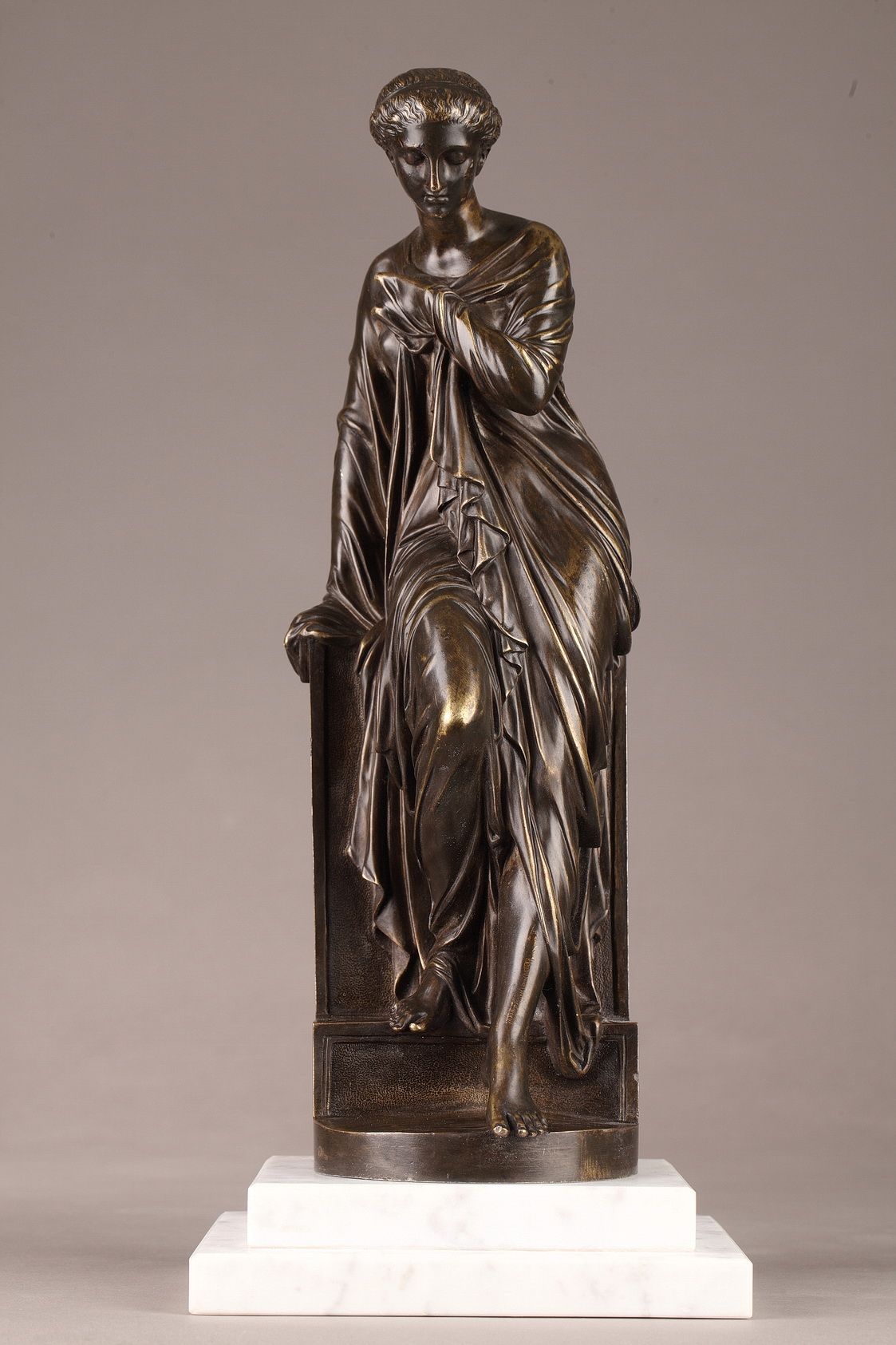 Suzanne by Eugène Antoine Aizelin
Suzanne by Eugène Antoine Aizelin
The Palais-Royal and the luxury trade
Since the reign of Louis XIV, the Palais-Royal shopping district has been a rich and surprising center of Parisian life. Set in a palace and garden north of the Louvre, it originally belonged to Cardinal Richelieu (1585-1642). Under Louis-Philippe d'Orléans (1747-1793), Duc de Chartres and future "Philipe Egalité" during the Revolution, the palace was refurbished and opened to the public as one of the first "shopping malls" in Europe.
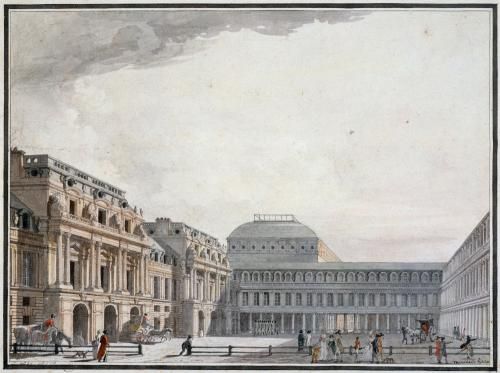
Drawing of the inner courtyard of the Palais Royal, 1791 © Paris Musée
Famous for its high-end goods and the wide variety of products available, it was one of the most important markets in Europe. As well as a thriving theatre and numerous restaurants, the old palace was home to numerous cafés, gambling dens, shops, hairdressers, bookshops and museums. For royalty, courtiers and wealthy foreign travellers, the Palais Royal was the epitome of luxury.
The apogee of the Palais-Royal (1780-1830)
From 1780 to 1830, the Palais Royal enjoyed its heyday. Here, in fact, was everything the capital had to offer in the way of luxury and entertainment. Fashion merchants, print stores, wigmakers, booksellers and other tradesmen shared the dozens of boutiques, while the arcades played host to crowds of prostitutes, gamblers and strollers drawn to the covered passages by the pleasures of shopping.
The stores
In terms of commerce, the Palais-Royal's success was due to the abundance and variety of goods on offer. There were stores selling jewelry,clocks, small bronzes, porcelain and glass, as well as printmakers, tailors, reading rooms, a bathhouse... Fashion merchants were mainly to be found in the Galerie de Bois, built in 1786 and consisting of two galleries lined with four rows of stores, making it the forerunner of covered passageways.
The objects sold in the Palais-Royal galleries are luxury items, made from precious materials such as mother-of-pearl, vermeil, tortoiseshell, gold or crystal, and very delicately worked. Tabletterie, the manufacture of boxes and caskets, is well represented in the showcases of the Palais-Royal. In addition to ladies', toilet and travel kits, there are small jewelry boxes, wallets, game boxes, hand mirrors, baguiers, ball books, perfume burners and other fancy objects.
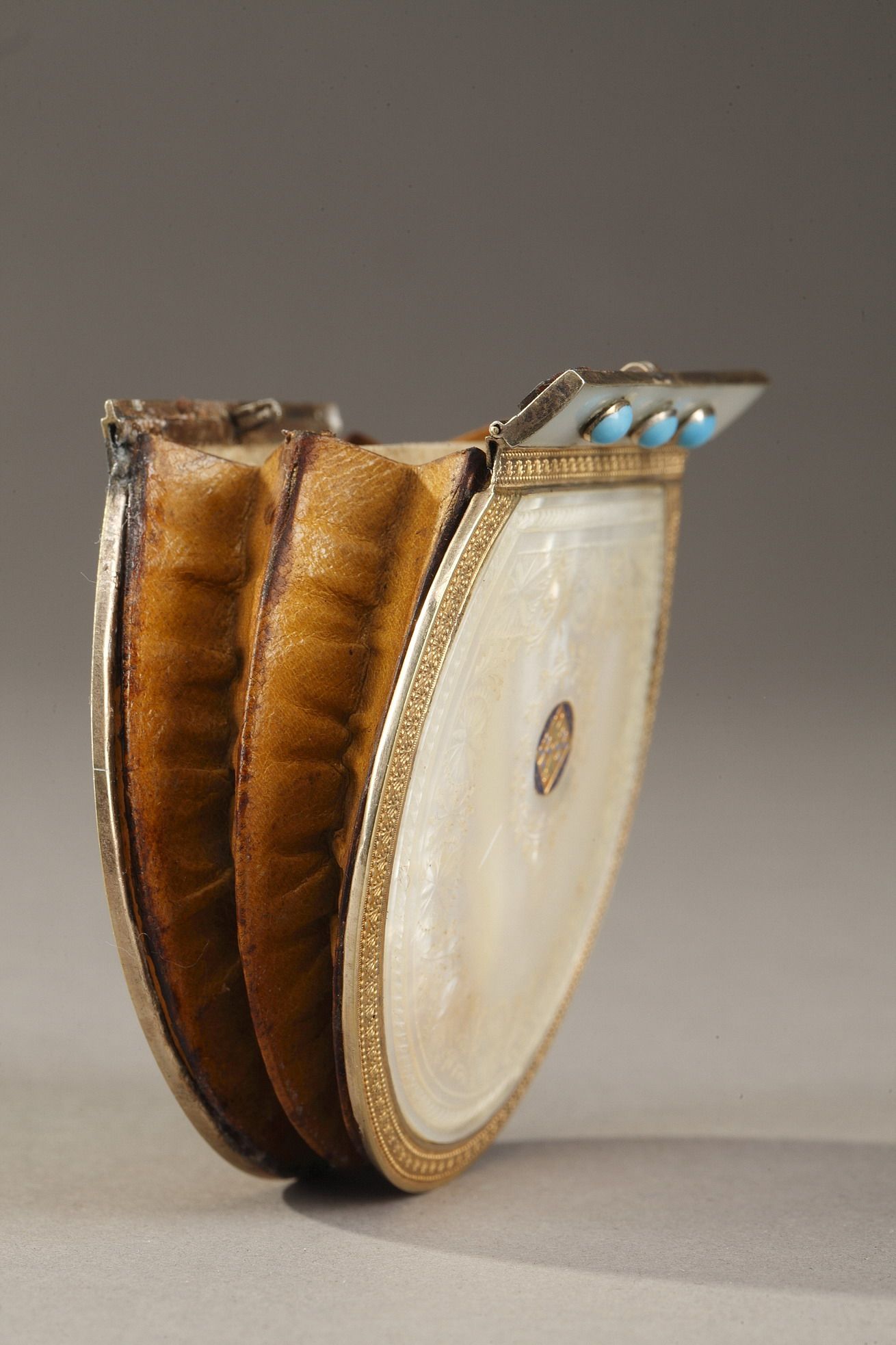
Mother-of-pearl, vermeil and turquoise coin purse
All those objects show an exceptional expertise appreciated by the rich French and foreign amateurs visiting Paris. Some of them bear a small enamelled gold pansy, emblematic of the luxury objects sold in the shops of the Palais-Royal.
The end of the Palais-Royal's Roaring Twenties
In 1830, King Louis-Philippe prohibited the solicitation of customers by the hundreds of prostitutes who roamed the arcades of the Palais-Royal, and in 1836, the gambling halls were closed. From then on, theaters and shows moved to the Grands Boulevards, putting an end to the Palais-Royal's glory years.
Bibliography
- L'histoire du Palais Royal, Passerelles - BNF, n.d. [online: http: //passerelles.bnf.fr/dossier/palais_royal_01...
- BRUSON, Jean-Marie (dir.), Romantic Paris 1815-1848, cat. exhibition, Paris, Petit Palais (May 22-September 15, 2019), Paris, Editions Paris-Musées, 2019.
- CHAMPIER, Victor, Le Palais-Royal d'après des documents inédits (1629-1900), Société de propagation du livre d'art, Paris, 1900 [online: https: //archive.org/details/lepalaisroyaldap01cha...
- MANNONI, Edith, Opalines, Paris, Editeur Ch. Massin, 1976.
- MÉON-VINGTRINIER, Béatrice, "Les galeries du Palais-Royal, ancêtre des passages couverts", Histoire par l'image [online: https: //www.histoire-image.org/fr/etudes/galeries...



